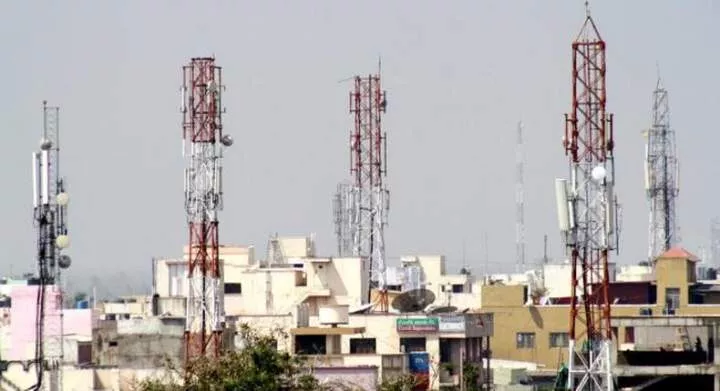
The Nigerian Communications Commission (NCC) has debunked the age-long sentiment that radiation from telecommunication towers poses health risks to people.
Many Nigerians tend to believe that living or working near a telecommunication tower could increase the risk of cancer or other health problems.
However, the NCC has allayed Nigerians' fears about the issue, saying no health hazard is associated with telecommunication towers.
Abraham Oshadami, the NCC's Executive Commissioner of Technical Services, clarified this while responding to questions at the commission's two-day training session for media executives in Lagos, on Thursday, June 20, 2021.
Oshadami said the radiation emitted by telecom towers should not cause panic because the height of the masts already distances the radiation from people.
There is really no health hazards associated with telecom masts (in residential areas). My little understanding about this is that the radiation is even far away, up there. Not even as close as the TV in our homes. The radiation coming from masts is not up to what we get from our phones. I don't think there's any cause for panic," he said.
He further explained that the commission ensured telecom companies seek approval before installing their masts in residential areas.
"It is in our regulation that before telcos install masts anywhere, they must seek an approval from us. And the NCC also goes there to inspect. If any mast does not meet specifications, it won't be approved. So, any mast installed by a telco is supposed to be duly approved before they install it," Oshadami explained.
The NCC regulation regarding the installation of masts in residential areas states that such towers must be placed at a minimum setback of five-metre distance to the nearest demise property excluding the fence.
Oshadami emphasised that the setback between the mast and residential areas as stipulated in the commission's regulation is not an admittance that towers pose health risks to people.
He said, "No sickness has been linked to radiation in all those years when wireless services have been in place. No one has been able to say this is the resultant effect of wireless communication (on human health.) And wireless communication has been with us for many years."
He maintained that the five-metre setback between a residential building and a telecom tower is more for physical safety than health risks.
"So, those setbacks you see are for physical safety. Sometimes, where there is a defect in the mast, it could fall. So there must be a standard so that if anything happens, there will be no physical damage to anyone."
Apart from that, wherever you have a mast in place, there's usually a generator, so the vibration from the generator could affect buildings if those specifications were not there. These are the reasons. It is more of physical safety than health risks," Oshadami explained.















Comments